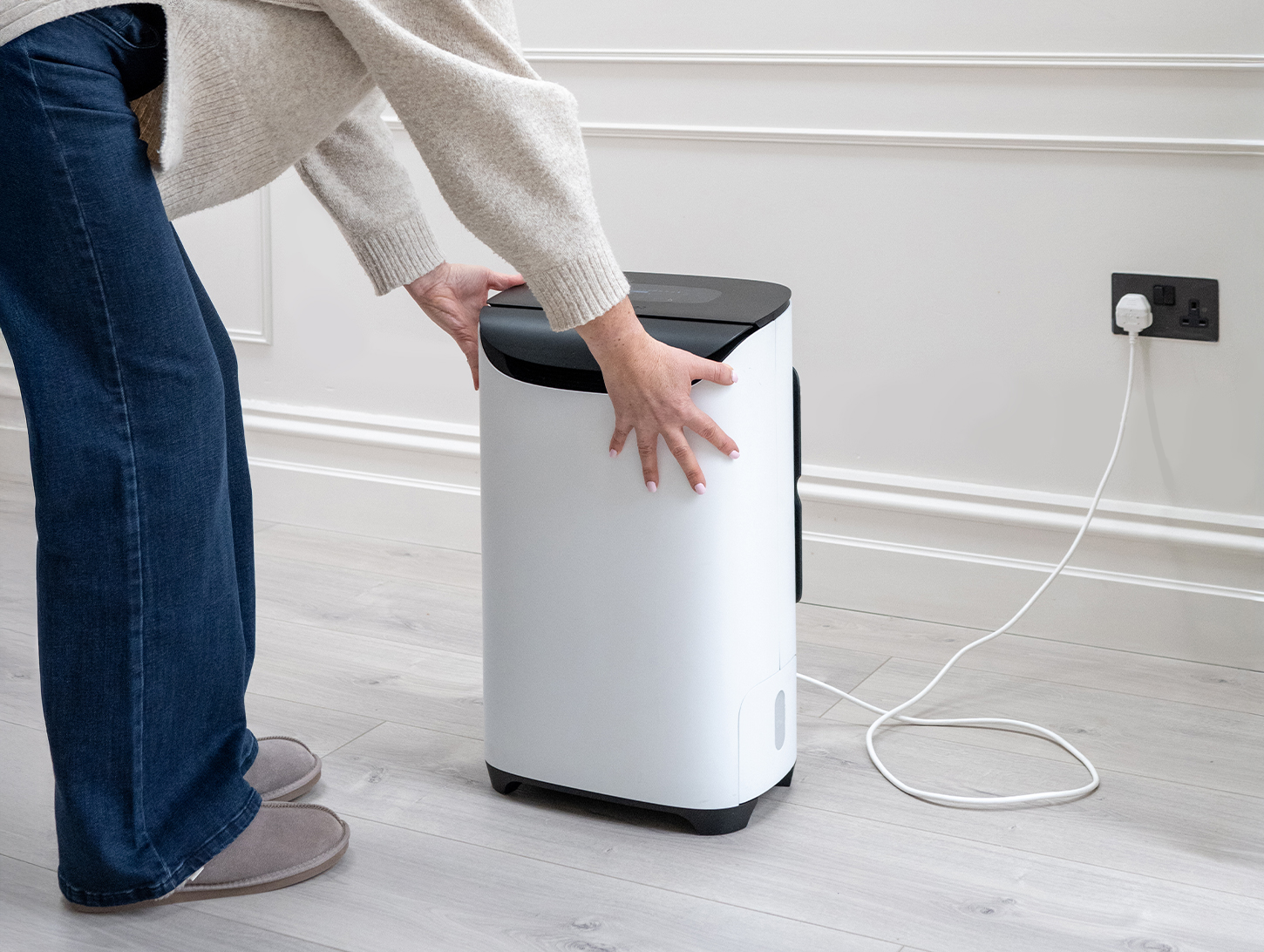This is a more common question than you might think. Whilst some homeowners and tenants are plagued by condensation and damp, the people next door seem to have a perfectly dry environment and no problems at all! It can be hugely frustrating to be dealing with the consequences of regular condensation, which can include mould and health issues. So why might it be happening?
The main reasons for condensation in your home
So you live in a house that’s identical – or attached – to the one next door. Your home has a problem but your neighbour doesn’t even get condensation. Why?
First let’s step back and remember why condensation occurs in your home the first place. There is moisture in the air all around you – you can’t see it, but it’s there. The measurement of the amount of moisture that is able to transform itself from the gas that you cannot see into condensation on your windows is called ‘relative humidity’. The higher the relative humidity reading is in your home the more likely it is you will get condensation. And the colder a surface is – such as your windows or walls – the more likely it is that you will have condensation.
How can I tell if my home is humid enough to cause condensation?
Relative humidity is measured between 0 and 100%rh – 100%rh is also known as condensation or dewpoint. A ‘normal’ reading in the home is between 40 and 60%rh. The more moisture that you put into the air the higher the relative humidity reading will be. So if you put moisture into the air through bathing, showering, boiling vegetables, drying washing, breathing (!) and putting the kettle on you will increase the relative humidity of the air. So, in terms of why your home has more condensation than your neighbour, it could just be that you are doing more of these moisture-creating activities on a daily basis.
Where is condensation more likely to occur?
Condensation is most likely on windows as these are colder than walls. Single glazed windows are colder than double glazed windows and poor quality double glazing is colder than good quality double glazing. North facing walls and windows are colder than south facing double glazed, so you are more likely to see condensation in these places. Windows shaded from the warmth of the sun by trees and shrubs are colder than windows that are not shaded.
So we can see where we are going with this. You can have two identical houses next to each other but in one you have a couple living on their own, drying their washing in a tumble dryer, with newly replaced double glazing, no shrubs shading their windows and they put lids on their saucepans when they are boiling their veg. Next door lives a family with three children, no tumble dryer, so clothes are dried on an indoor drying rack instead. They have older double glazing and they cook a lot of rice and pasta but never put a lid on the pans and do not have an extractor in the kitchen or bathroom.
The second family is creating a lot of additional moisture for their home to cope with, and are far more likely to get condensation around the house.
The side-effects of drying washing in your home
The Mackintosh School of Architecture report on the side effects of drying washing in the home, published in 2012, attracted a lot of attention from media not just in the UK but across the world. A subject we talk about all the time, we were interested in the headlines, commentary and feedback from homeowners.

BBC Radio 2 discussed this as part of the Jeremy Vine lunchtime show, and we were interested to hear the suggestion that a return to ill fitting, single glazed windows would help. This is not right, and is the exact opposite of progress in our view.
Elsewhere on the web, one of the world’s most-read newspaper websites had a comments section full of contributions from people who said the whole thing was nonsense: they had never seen the problem, and so it did not exist! Others stated that opening a window worked for them; but many wrote that they were plagued by condensation in their home and, on a positive note, a fair percentage championed the use of a dehumidifier in order to create a drier environment and reduce condensation and damp problems.
Worried about why you have condensation in your home?
You can see from this article that there are some central activities in your house that contribute to the appearance of condensation. Some of these you can’t do anything about – north-facing windows are always going to be north-facing windows. But there are lots of things you can do. Fit and use extractor fans in your kitchen and bathroom. Open windows when you are cooking to let excess moisture out. Check the state and quality of your windows and consider replacing if you can. And consider investing in a dehumidifier.
Our range of home dehumidifiers are designed to remove excess moisture from the air in your home and can make an immediate difference to the atmosphere. They are cheap to run and help to manage those relative humidity levels we talked about earlier. Take a look at the range and if you have any questions, just call our office on 01483 234900 and we’ll be happy to help.
Products featured: dehumidifiers







2 responses
I agree with these reasons. We moved a house recently and experiencing this problem. I can see that first.
1.The new house is not insulated. Means, colder walls because of the heat loss through the roof and walls.
2. Old double glazed windows with thin gaps in fitting places, and worn out draft snakes that are flat and let’s cold and moisture from outside to get in.
3. Radiators are fitted anywhere else apart from below the windows. I find it very important point, because warmth that goes to the windows from radiator makes it warmer. Thus, no condensation occurres. In our previous house we had insulated outdoor walls and loft, radiators under the windows. And even if our windows werent new, we never had these issues we have now with such amount of condensation on windows. I would suggest paying attention to insulation of the house and where the radiators are fitted, because these are the core points.
Some good points there Saba. At the end of the day condensation is a result of a combination of the amount of moisture in the air and the difference between the room air temperature and the window surface temperature. The greater the gap between the two the less excess moisture you need for condensation to form. On the other hand if you have lots of moisture in the air then even warm windows will have condensation on them.